If you’re a fishkeeper, then you know how important it is to keep your tank in balance. Unfortunately, too many fish can throw off the delicate ecosystem of your aquarium. And it leads to some serious problems down the road. Luckily, there are signs of too many fish in tank ! In this article, I’ll explain what these telltale signs are so that you can take action before things get out of hand.
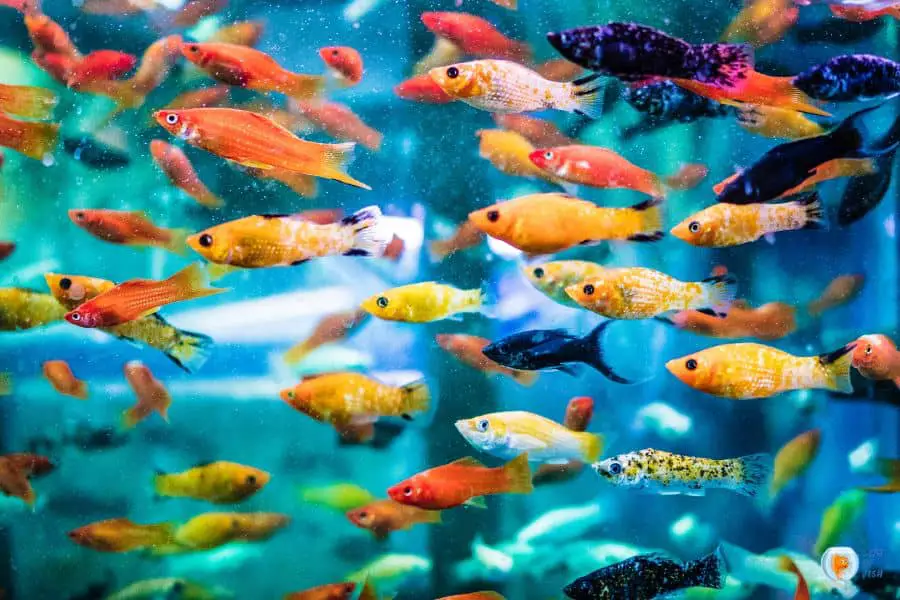
Having too many fish in an aquarium can cause all sorts of issues. Such as water quality deterioration to disease outbreaks among your finned friends. So it’s essential that experienced aquarists recognize when their tanks have become overrun by fish and take steps to address it ASAP. But what should we look for? There are certain indicators that signify an overcrowded tank: from changes in behavior to visible damage to plants or decorations.
In this article, I’m going to share my expertise on spotting warning signs of too much aquatic life in your tank. As well as suggest ways to remedy the problem quickly and safely. Whether you’re just starting out as a hobbyist or already consider yourself an expert aquarist. Hopefully, this guide will provide valuable info about managing your aquarium population responsibly.
How To Tell If Your Aquarium Has Too Many Fish?
Jump To
When it comes to fish tanks, having too many fish can be dangerous for their health. There are a few key signs you should look out for if you believe that your aquarium has too many fish.
Firstly, the water quality will start to become compromised. If the tank is overstocked with fish, the chances of ammonia levels building up in the water increase drastically. This can cause harm and even death among your aquatic friends!
Secondly, when there are too many fish in one tank they often feel crowded and stressed. As a result, they may act aggressively towards each other or display unusual behaviors such as nibbling on plants or swimming erratically around the tank. It’s important to monitor this closely so that these issues don’t spiral out of control.
Finally, it’s also important to pay attention to how much food you’re giving your fish. Overfeeding leads to uneaten food which degrades quickly, causing further damage to the already delicate balance of your aquarium’s ecosystem. If any of these scenarios sound familiar then it might be time to consider investing in a bigger tank or reducing the number of fish in your current one!
Let me explain these causes one by one.
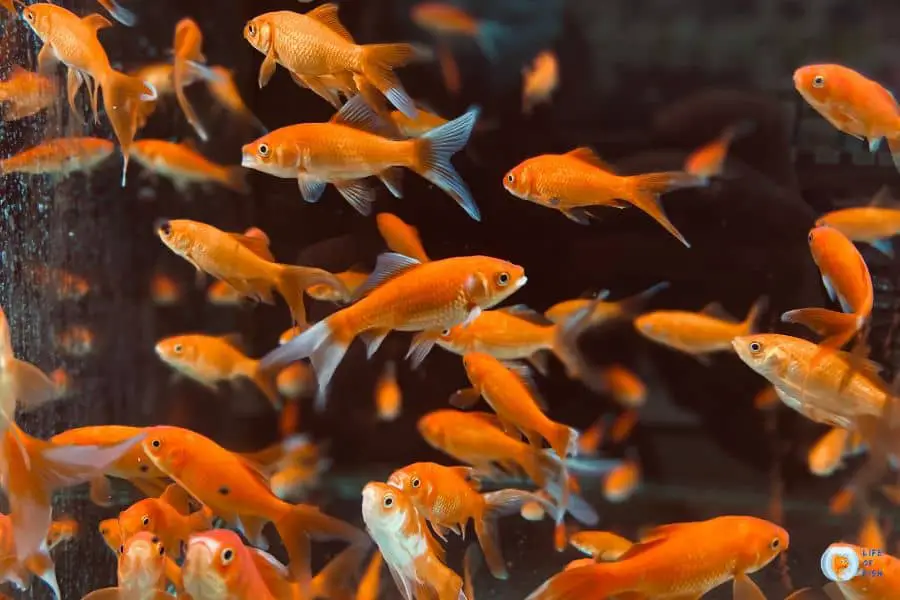
Signs Of Too Many Fish In Tank
Overpopulation, Stress, And Disease
When it comes to aquarium fish, having too many of them in the tank can lead to some serious problems. Overpopulation, stress, and disease are all signs that your tank may not be able to sustain the number of inhabitants you have. Let’s take a look at what these issues mean for your aquatic community.
First off, when there is overpopulation in an aquarium, oxygen levels will naturally decrease as more fish consume the same amount of oxygen-rich water. This lack of oxygen can cause distress among your tank mates. They’ll become lethargic or even die if their environment isn’t balanced properly. Additionally, overcrowding leads to higher-than-normal levels of waste which can further lower the quality of water.
Furthermore, with so many competing for resources like food and shelter within a confined space, stress levels among aquarium fish tend to increase significantly when overcrowded. Stress has been linked with weakened immune systems in certain species. Meaning that any diseases present could spread more quickly amongst ill-equipped fishes that haven’t had time to build up resistance against them.
It’s important then to regularly check on both the physical state and behavior of our tank buddies. Particularly after adding new members to the group! It might also help to invest in a larger tank if possible. This way we can ensure that our beloved aqua friends receive enough oxygen and nutrients whilst living harmoniously together without fear of being overwhelmed by others around them.
Stunting Of Fish Growth
When it comes to fish tanks, overcrowding can have a negative effect on the health of your fish. One sign is stunting of growth among the fish – that’s when they don’t grow as large as they should. It happens for several reasons.
First, when there are too many fish in one tank, competition increases and food becomes scarce. Only the strongest will survive. This means that small or weaker fish may not get enough to eat and won’t be able to develop properly.
Secondly, if waste accumulates due to overpopulation, oxygen levels decrease which inhibits their ability to breathe and affects their growth rate.
Thirdly, an overflowing tank allows diseases like Ich or bacterial infections to spread quickly. Because a lot of fish are living together in close quarters with limited movement and resources. Here are four steps you can take to prevent this issue:
- Monitor how much your fish eat;
- Regularly check the water quality;
- Make sure there’s plenty of space so they can swim freely;
- Don’t add any new fish until you’re confident everyone has enough room and resources.
Stunted growth isn’t just an aesthetic problem. It could also impact your fish’s life spans! If left unchecked for too long, even healthy-looking small fish might die unexpectedly from lack of nutrition or other underlying issues related to overcrowded conditions in your tank. Therefore, it’s important to monitor your tank regularly and make sure all inhabitants have access to clean water and enough food that meets their dietary needs.
Fish need plenty of space for swimming around comfortably without bumping into each other constantly. Otherwise, stress levels rise significantly leading them vulnerable to illnesses caused by poor hygiene such as fungi or parasites. Remember that no matter what size your tank is, never stock more than its maximum capacity can handle!
Nitrites And Overcrowding
When there are too many fish in the tank, it can cause a variety of issues. One of these is nitrites and overcrowding. This happens when the aquarium isn’t large enough to support all its inhabitants. Leading to high levels of ammonia and nitrate levels that can be harmful for the fish. Here are some signs you may notice if your tank has fallen victim to overcrowding:
- Fish swimming erratically or having trouble breathing
- Unusually aggressive behavior among fish
- Foul-smelling water
- A decrease in the clarity of the water due to excess waste from overstocked tanks
If any of these symptoms sound familiar, then it’s likely that your aquarium has exceeded its capacity. To rectify this problem, you’ll need to reduce the population by either removing some fish or investing in a larger tank. It’s important not to let overcrowding go unchecked. Because doing so could result in long-term damage such as stunted growth or even death amongst your aquatic friends!
Taking steps now to prevent overcrowding will ensure that your fish stay healthy and happy for years to come. Consider regularly testing your water quality. Then check stocking limits carefully based on how big your aquarium is – after all, prevention is always better than cure!
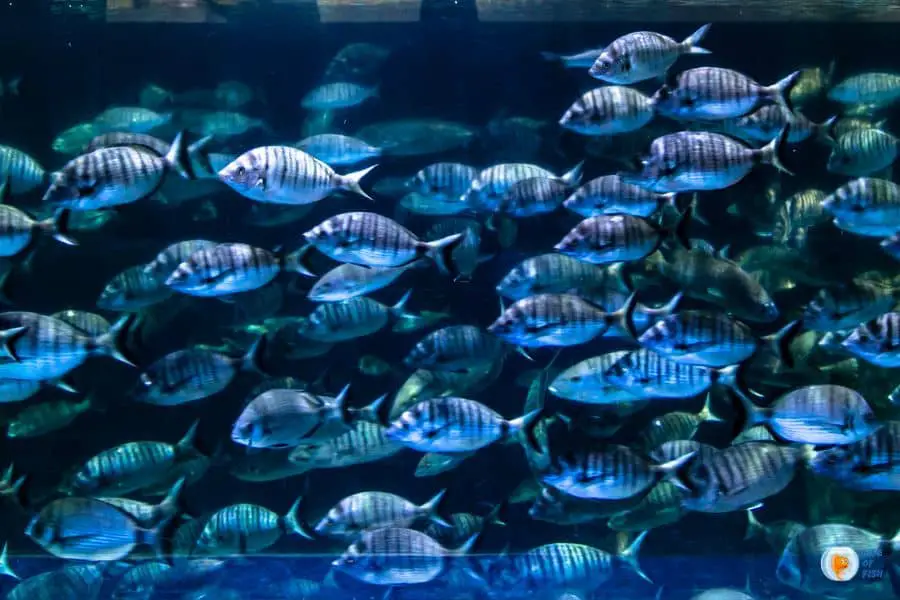
Nitrates And Overcrowding
When it comes to fish tank management, nitrates and overcrowding are two of the biggest indicators that you have too many fish in your tank. This is because high nitrate levels can lead to problems such as algae growth, while overcrowding can put stress on the fish and affect their health. Here’s a quick look at why they’re important:
- Nitrate Levels – When there are too many fish in an aquarium, nitrate levels become elevated. This means beneficial bacteria aren’t able to do their job properly. As a result, this leaves the water without natural filtration and toxins start to accumulate more quickly.
- Beneficial Bacteria – Having enough beneficial bacteria present in your aquarium is essential for keeping the water clean and healthy for your fish. Without them, harmful pollutants can build up faster than normal resulting in poor water quality conditions.
- High Levels – If nitrate or ammonia levels get too high, this will cause harm to your fish by causing irritation to their gills and making it difficult for them to breathe. It also increases their susceptibility to diseases like Ich.
- Overcrowding – Too many fish in one tank puts strain on resources available within the ecosystem so be sure not to overstock! This can cause a decrease in oxygen concentration levels. This may leave some of your fish struggling with breathing difficulty due to a lack of oxygen.
These are all signs that you need to reduce the number of fish in your tank! Taking regular measurements of nitrite/nitrate levels and monitoring crowding issues should help keep things under control when it comes to managing overpopulation concerns.
Overcrowding And Ammonia Build Up
We all know how much fun having a fish tank can be. But if you’re not careful it can quickly become an unhealthy environment for your finned friends. Overcrowding and ammonia build-up are two of the main signs that there may be too many fish in your tank.
When tanks become overcrowded, water changes need to happen more frequently than usual. Or else high levels of ammonia will accumulate from waste products excreted by the fish. Ammonia poisoning is very dangerous for fish and can lead to death if left unchecked. Here’s what you should keep an eye out for:
- Cloudy or smelly water
- Fish breathing heavily near the surface
- Fish swimming erratically
- Unusual behavior such as lying at the bottom of the tank
To avoid these issues, make sure to do regular water tests to check for elevated ammonia levels. Then take prompt action with partial water changes when needed. Additionally, monitor how often you feed your fish so that they don’t over-eat and create excess waste within their home. Taking good care of your aquatic life is essential!
Low Oxygen And Overcrowding
Low oxygen and overcrowding are two of the biggest signs that there are too many fish in your tank. When aquarium water becomes overstocked with fish, or when you add aggressive fish to an existing tank, it can cause serious harm to all its inhabitants.
Here’s what low oxygen levels and overcrowding look like:
- Fish may start gasping at the surface of the water for air.
- Water quality can decrease due to ammonia build up from excess waste produced by too many fish.
- Aggressive fish will fight more often as they compete for space and food.
- You might notice a sudden increase in diseases and illnesses among the aquatic life in your tank.
It’s important to keep an eye on these indicators so that you can quickly address any potential issues before they become worse. By regularly testing your aquarium water parameters. Such as pH balance and nitrate/nitrite levels, and monitoring your fish behavior, you’ll be able to spot these problems early on and make sure everyone is healthy and happy!
Overpopulation And Aggression
When it comes to aquariums, overcrowding is a common sign that there may be too many fish. It can cause aggression among the different species of fish as they compete for food and space. This is especially true with betta fish, which are known to get aggressive when left in an overpopulated tank due to their territorial nature.
Not only can overcrowding lead to hostility between the inhabitants of your tank but it can also affect the health of your aquarium. When the number of fish exceeds what is recommended for the size of its environment, oxygen levels tend to drop dramatically. Low oxygen levels will make it difficult for your fish to breathe. And can ultimately kill them if not addressed quickly by releasing some of the population or adding more aeration devices into your tank.
Having a healthy aquatic ecosystem requires balance and moderation in order to maintain optimal water conditions including adequate nitrate levels and sufficient oxygen levels. Too much of one thing can have drastic effects on both you’re fishes’ wellbeing and overall aesthetics of your aquarium – so take care when deciding how many occupants you want in yours!
Algae Boom
When it comes to too many fish in a tank, one of the most common signs is an algae boom. If you’re seeing more and more green fuzz growing on your aquarium plants or decorations, then you probably have too many fish for your tank’s size. These excessive nutrients come from increased itrate levels that are caused by overcrowding of freshwater fish.
Algae blooms can take over quickly if not taken care of soon enough. They can block out light sources which will make it difficult for any kind of aquatic life to live there. This could be fatal for your beloved pet fish as they won’t be able to get the oxygen they need to survive. Be sure to regularly monitor your tank water with test strips so that you can keep track of these levels before things get out of hand.
It’s important to remember that no matter how much we love our pets, their health should always come first – even if that means reducing the number of fish in our tanks! Regular maintenance and monitoring can help ensure all your little swimmers stay safe and healthy in their underwater home.
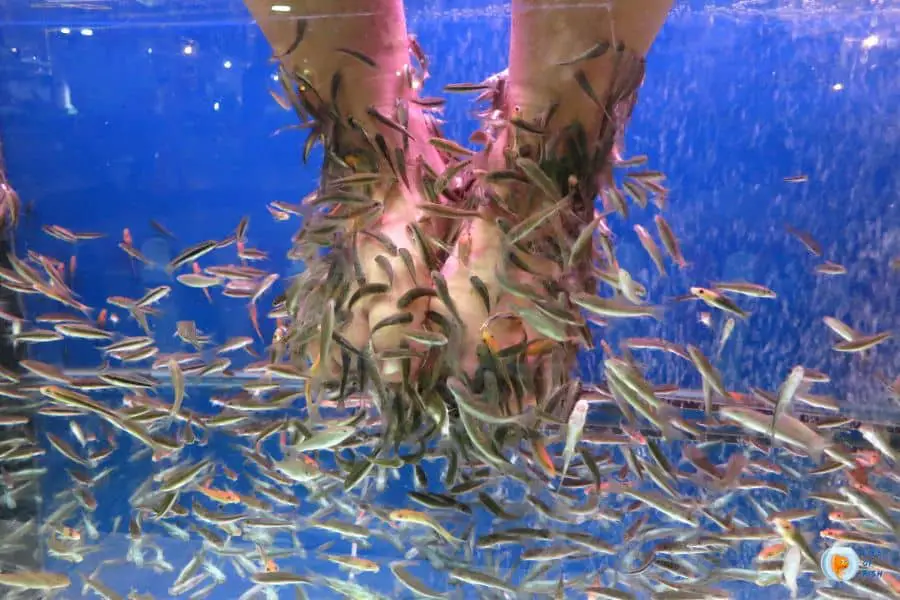
The One Inch Per Gallon Rule
When it comes to knowing how many fish can safely be kept in a tank, the one inch per gallon rule is an important guideline. This rule states that for every single gallon of water in your tank, there should only be one inch of fish present at any given time. It’s best to use this as more of a starting point than an absolute measure since some species of fish may require more space and others less depending on their size and activity level.
How Many Fish Can I Have Before The Aquarium Is Overstocked?
When it comes to stocking an aquarium, determining how many fish you can have before the tank is overstocked is a tricky question. With so many factors at play, such as water type and size of tank, there really isn’t one definitive answer that works for everyone. It’s important to consider the amount of space your fish will need in order to swim comfortably without overcrowding each other.
A good rule of thumb is the one inch per gallon rule; meaning for every one inch of body length for your fish you should provide them with 1 gallon of tank space. This means if you had a 10-gallon aquarium and wanted 4 small goldfish (which typically grow up to 3 inches) then the maximum number of goldfish would be three since they would take up more than 10 gallons when grown fully.
However, another factor to keep in mind is nitrate levels – too high or low could lead to unhealthy water conditions that may harm your fish. Keeping track of these levels regularly through testing kits can help determine whether or not any additional load on your aquarium might be detrimental. All in all, taking into consideration both the space available and nitrate level will ensure that no matter what kind of fish you’re keeping, their environment won’t become overstocked and dangerous for them.
Remember That Your Fish Might Grow Bigger
When it comes to stocking an aquarium, there’s one important thing to remember: your fish might grow bigger. It’s easy to forget that when you’re starting out and adding little guppies or neon tetras. But if you don’t plan ahead for their growth, you could end up with too many fish in the tank!
To avoid this scenario, here are a few things to take into account:
– Nitrate Levels: High nitrates can cause stress for your aquatic friends. Test the water regularly and change it as needed so that nitrate levels stay low.
– Filter Media: Make sure your filter media is large enough to accommodate the size of all your fish once they reach maturity.
– Growth Rate: Research how quickly different species grow, so you can accurately estimate how many adult fish will fit in the tank in the future.
By following these steps and planning ahead, you’ll be able to keep your aquascape healthy and balanced – without having too many occupants! Plus, knowing what kind of environment works best for each species will help ensure everyone stays happy and thriving.
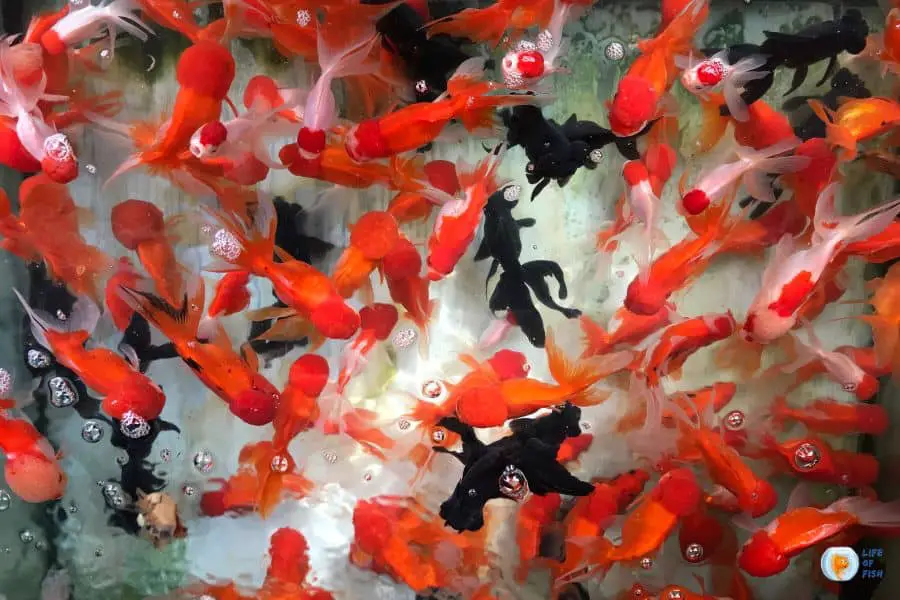
Frequently Asked Questions
What Is The Best Way To Prevent Overpopulation In My Aquarium?
The best way to prevent overpopulation in your aquarium is to ensure that you only add fish that are appropriate for the size of your tank and that you do not exceed the recommended stocking levels. Additionally, you should be diligent about removing excess fish if necessary.
Is There An Optimal Number Of Fish To Keep In My Aquarium?
Yes, there is an optimal number of fish to keep in your aquarium. The number will depend on the size of your tank and the specific needs of the fish you are keeping. It is important to research each species and their ideal requirements before adding them to your tank.
How Often Should I Do Water Changes To Avoid Overcrowding?
It is recommended to do water changes on a regular basis, typically every 1-2 weeks, depending on the size of your tank and the number of fish you have. This will help to maintain good water quality and prevent overcrowding.
Are There Any Other Indicators Of Overpopulation Besides Algae Bloom?
Yes, there are other indicators of overpopulation besides algae bloom. These can include decreased oxygen levels, increased levels of waste and toxins, and behavioral changes in the fish.
How Can I Tell If My Fish Are Stressed Due To Overcrowding?
Fish that are stressed due to overcrowding may display a variety of symptoms, such as increased aggression, decreased appetite, lethargy, or abnormal swimming patterns. It is important to monitor your fish regularly to ensure they are healthy and happy in their environment.
Conclusion
It’s important to remember that overpopulation in an aquarium can have serious consequences for the health of your fish. It is essential to be aware of any signs that may indicate too many fish are living in your tank and take steps to reduce their numbers if necessary. Being attentive to changes in water quality, such as a rapid increase in algae bloom or other contaminants, will help you maintain a healthy balance for your aquatic inhabitants. Regularly monitoring the behavior of your fish and observing them for signs of stress can also alert you to potential overcrowding issues.
If I find myself with too many fish in my tank, there are some things I can do to address this problem. Removing excess fish is often the most effective solution, but I need to make sure they’re rehomed humanely so they won’t be subject to further harm or distress. Additionally, increasing the frequency of partial water changes or investing in additional filtration equipment may improve water quality and thus alleviate overcrowding-related concerns.
Read Next : How To Clean A Fish Tank: Mastering the Art of Fish Tank Cleaning
